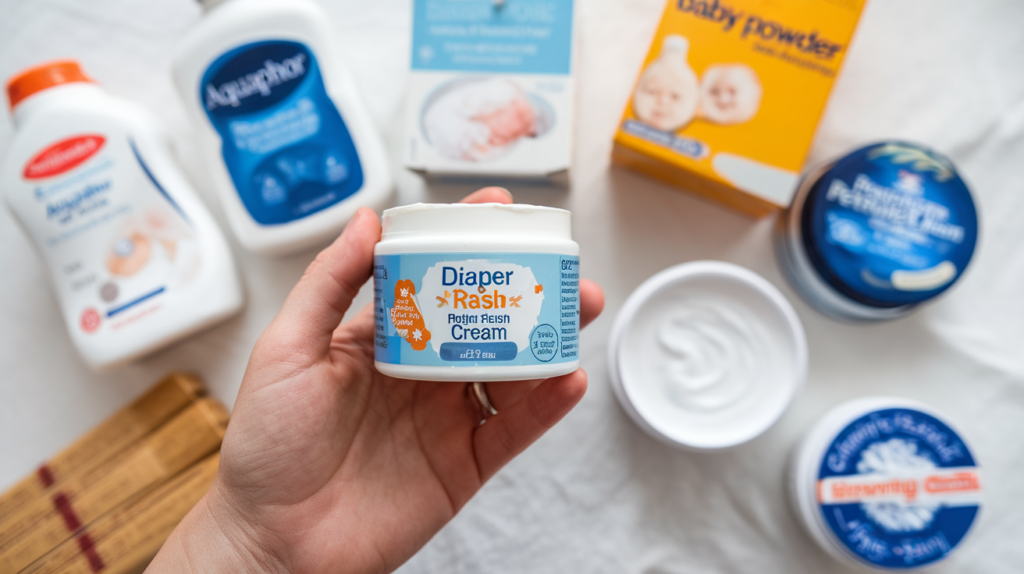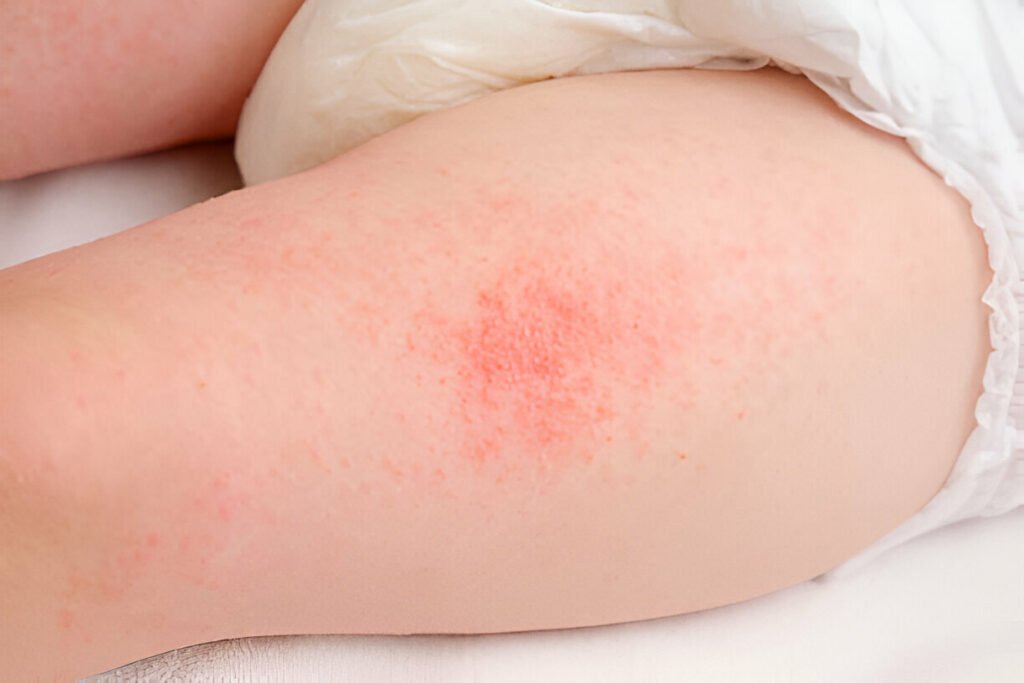Extreme Diaper Rash Remedies That Actually Work – Fast Relief for Babies

Diaper rash affects up to 50% of babies at some point, leaving parents desperate for solutions when their little one’s skin becomes red, irritated, and painful. While most diaper rashes are mild and respond to basic care, some cases require more intensive treatment to provide relief and promote healing.
Understanding which remedies truly work can save you time, money, and most importantly, reduce your baby’s discomfort. This guide covers proven treatments that go beyond basic diaper cream, including natural remedies backed by research and prevention strategies that actually make a difference.
Understanding Diaper Rash: Why It Happens
Diaper rash occurs when your baby’s delicate skin becomes irritated from prolonged contact with moisture, urine, and stool. The warm, humid environment inside a diaper creates perfect conditions for skin breakdown and irritation.
Several factors contribute to diaper rash development:
- Moisture exposure: Wet diapers left on too long allow urine and stool to break down the skin’s protective barrier
- Friction: Tight or ill-fitting diapers can rub against sensitive skin
- Chemical sensitivity: Some babies react to fragrances, dyes, or other chemicals in diapers or wipes
- Dietary changes: New foods can alter the acidity of urine and stool, making them more irritating
- Antibiotic use: Antibiotics can disrupt the natural balance of bacteria, leading to yeast overgrowth
Recognizing these triggers helps you choose the most effective treatment approach for your baby’s specific situation.
The Foundation: Frequent Changes and Gentle Cleaning
Before exploring advanced remedies, master the basics that form the foundation of all diaper rash treatment.

Change Diapers Immediately
The most crucial step is changing wet or soiled diapers as soon as possible. Even slightly damp diapers can worsen existing rashes or create new ones. Check diapers every hour during active rash episodes, and change them immediately upon discovering wetness or stool.
Clean Gently but Thoroughly
Use warm water and a soft washcloth to clean the diaper area. Avoid scrubbing, which can further damage irritated skin. Pat the area dry completely before applying treatments or putting on a fresh diaper.
Skip baby wipes during active rash episodes, as they can contain alcohol or fragrances that irritate damaged skin. If you must use wipes, choose fragrance-free, alcohol-free options designed for sensitive skin.
Powerful Home Remedies That Work
1- Breast Milk Application
Research shows that breast milk can effectively treat diaper rash when applied directly to affected skin. A study of 30 infants found that breast milk helped heal diaper rash as effectively as traditional treatments.
Breast milk contains vitamin E and other nutrients that support skin healing. Simply express a small amount of breast milk and apply it to clean, dry skin before putting on a fresh diaper. Allow it to air dry for a few minutes before diapering.
2- Zinc Oxide Creams

Zinc oxide remains one of the most effective ingredients for treating diaper rash. It creates a protective barrier that prevents moisture from reaching irritated skin while allowing healing to occur underneath.
Apply zinc oxide cream in a thick layer that completely covers the rash. Don’t rub it in completely – you want a visible barrier on the skin. Popular brands include:
- Desitin
- Triple Paste
- Balmex
Reapply with each diaper change, adding more cream rather than wiping away what remains from the previous application.
3- Petroleum Jelly Protection
Petroleum jelly (Vaseline) works similarly to zinc oxide by creating a moisture barrier. It’s particularly effective for preventing diaper rash in babies prone to frequent breakouts.
Apply a thin layer to clean, dry skin before putting on each fresh diaper. This method works especially well for babies with sensitive skin who react to other products.
4- Natural Oil Treatments
Certain natural oils provide effective relief for diaper rash while moisturizing damaged skin.
Coconut Oil: Contains antimicrobial properties that help prevent secondary infections. Apply a thin layer to affected areas after cleaning and drying the skin.
Sunflower Oil: Research indicates that sunflower oil effectively treats diaper rash when massaged gently into affected skin. It provides moisture while creating a protective barrier.
A 2021 study found that vegetable oils like olive oil and mustard oil are less effective than coconut and sunflower oils for diaper rash treatment.
5- Herbal Remedies with Scientific Support
Several plant-based treatments have shown promise in clinical studies:
Calendula (Marigold): Research demonstrates that calendula cream outperforms aloe vera for diaper rash treatment. Look for products containing calendula extract, or make a gentle wash using calendula tea.
Henna: Studies show that henna-based treatments can be more effective than hydrocortisone ointment for diaper rash. This is likely due to henna’s anti-inflammatory and antimicrobial properties.
Witch Hazel: Small amounts of witch hazel applied to affected skin can help soothe irritation and reduce inflammation.
6- Bentonite Clay Treatment
Bentonite clay offers a unique approach to diaper rash treatment. This volcanic ash-derived clay has absorbent properties that help keep skin dry while providing anti-inflammatory and antibacterial benefits.
Mix a small amount of bentonite clay with water to form a paste. Apply it to clean, dry skin and allow it to dry completely before putting on a fresh diaper. The clay absorbs excess moisture while protecting the skin.
What to Avoid During Treatment
Certain products can worsen diaper rash or slow healing:
Fragranced Products
Avoid any products containing fragrances or dyes, including:
- Scented baby wipes
- Fragranced laundry detergent
- Perfumed diaper rash creams
- Bubble baths with added scents
Baby Wipes During Active Rash
While convenient, baby wipes can irritate already damaged skin. The alcohol and preservatives in many wipes can cause stinging and delay healing. Stick to warm water and soft cloths during active rash episodes.
Powders of Any Kind
Never use baby powder, cornstarch, or baking soda on diaper rash. These powders can be dangerous if inhaled and may worsen certain types of rashes, particularly those caused by yeast.
When to Seek Medical Attention

While most diaper rashes respond to home treatment, certain symptoms require professional medical care:
Signs of Infection
Contact your pediatrician if you notice:
- Open sores or blisters
- Pus or fluid drainage
- Red streaks extending from the rash
- Unusual odor from the affected area
Persistent or Worsening Symptoms
Seek medical attention if:
- The rash doesn’t improve after 3-4 days of treatment
- The rash spreads beyond the diaper area
- Your baby develops a fever
- Your baby seems unusually fussy or uncomfortable
Potential Yeast Infection
Yeast infections require prescription antifungal treatment. Signs include:
- Bright red, raw-looking skin
- Raised bumps or pustules
- Rash in skin folds
- Satellite lesions (small red spots around the main rash)
Prevention Strategies That Work
Choose Super-Absorbent Diapers
Modern disposable diapers with superabsorbent materials dramatically reduce diaper rash incidence compared to cloth diapers. The improved moisture-wicking keeps skin drier for longer periods.
If you prefer cloth diapers, ensure they fit properly and change them more frequently during rash-prone periods.
Ensure Proper Fit
Diapers that are too tight create friction and trap moisture, while loose diapers allow waste to spread and irritate more skin. Check the fit regularly as your baby grows, and adjust sizes as needed.
Use Unscented Products
Choose fragrance-free, hypoallergenic products for everything that touches your baby’s skin:
- Diapers
- Wipes
- Laundry detergent
- Bath products
Monitor New Foods
When introducing new foods, watch for changes in your baby’s stool that might indicate increased acidity. Citrus fruits, tomatoes, and other acidic foods can make waste more irritating to sensitive skin.
Introduce new foods gradually and consider temporarily removing them if diaper rash develops shortly after introduction.
Allow Diaper-Free Time
Give your baby’s skin time to breathe by allowing periods without a diaper. Lay your baby on waterproof pads or towels and let them have diaper-free time several times a day, especially during active rash episodes.
Your Action Plan for Diaper Rash Relief
Diaper rash doesn’t have to be a source of stress for you or discomfort for your baby. By combining proven remedies with smart prevention strategies, you can effectively treat current rashes and prevent future ones.
Start with the basics: frequent diaper changes, gentle cleaning, and protective barrier creams. For stubborn cases, consider natural remedies like coconut oil, calendula, or bentonite clay. Always consult your pediatrician if symptoms persist or worsen.
Remember that every baby’s skin is different. What works for one child may not work for another, so be patient as you find the right combination of treatments for your little one. With consistent care and the right approach, even severe diaper rashes can heal quickly and completely.






